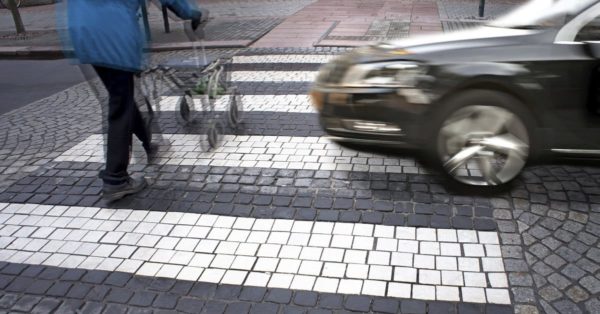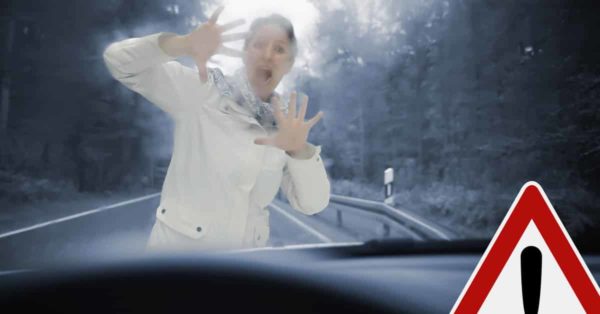
Car accidents involving a pedestrian injury after they are hit while walking frequently result in serious injury or death. Contrary to what you might think, however, the driver is not automatically responsible. Liability for a collision, whether it causes a personal injury or a death in Idaho is determined by each party’s conduct, not their mode of transportation. If the pedestrian is at fault for the incident they are unable to recover for their own injuries. This is the basic underlying idea of the personal responsibility in Idaho injury law.
Idaho Law Regarding Pedestrians
A pedestrian often has the right of way. However, like motorists, pedestrians have a duty to exercise reasonable care while traveling to and from their destination. They must obey the rules of the road and all applicable traffic laws. This is just like when driving a motor vehicle. Pedestrians who fail to live up to their duties can be found negligent if their actions cause injury or property damage. Idaho law has a number of rules applicable to pedestrians. And, some of the same rules, and other special statues, apply to bicyclists.
Here are some examples of behavior that could result in an Idaho pedestrian being found responsible for an injury accident:
- Leaving a place of safety to enter the roadway
- Crossing highways or other busy roads without traffic controls
- Walking along bridges, highways, or other areas where pedestrians have no legal access (unless it is an emergency situation)
- Crossing outside of the crosswalk
- Crossing against traffic control signals
- Failing to look before crossing the street and running into the path of oncoming vehicles
Pedestrians can have an opportunity to avoid accident-causing situations. Pedestrian accidents seldom occur outside the roadway. Taking care when entering an area of danger is the best course of action.
Comparative Responsibility And Pedestrian Fault
Sometimes, law enforcement officials will find that both the driver and the pedestrian were partially responsible for the accident. For example, the driver of the car may have run a red light and the pedestrian may have been crossing in an inappropriate location. In cases like this, a percentage of fault is applied to each party.
Idaho is one of the states with a modified comparative fault system with regard to personal injury lawsuits. This means that each party is held liable for damages in accordance with their own percentage of fault. However, plaintiffs can’t recover any damages if they are 50% or more at fault.
When The Driver is Responsible For Hitting a Pedestrian
When drivers hit pedestrians they can be responsible for compensating the injured person.  Determining the amount of compensation can be a complex process.
Determining the amount of compensation can be a complex process.
What is the Value Of the Claim of A Pedestrian Hit By a Car?
There is no “typical” or “ordinary” settlement amount for a types of accidents. Relevant things that must be considered when evaluating a claim for damages include:
- The severity of your injury: Soft or connective tissue (muscles etc.) injuries are perceived as less severe and thus receive less compensation than broken bones or other injuries that are easily detected through a medical examination.
- The extent of your medical treatment: This includes whether or not you’ve seen any specialists, although chiropractors and other alternative medicine providers carry less weight than physicians and physical therapists.
- Time you’ve missed from work: Lost wages should be reimbursed at full value.
- Whether or not your injury has limited your ability to perform your previous work duties in the future: An injury that will require you to stop working or seek employment in a lower paying field will result in higher compensation.
- Ways in which your injury has affected your daily routine: If you’re not expected to make a full recovery, your settlement should take into consideration whether or not you’ll need extra help with daily tasks.
- If your actions in any way contributed to the accident: Pedestrians are usually not found liable for an accident, but you would receive less, maybe no, compensation if you negligently stepped off the curb in front of a moving vehicle or traveling where pedestrian access is prohibited.
How Do Medical Expenses Get Paid When A Person is Hit By A Car?
Most often medical expenses relating to a pedestrian injured by a car will first be paid by the pedestrian’s health insurance company. The health company will ultimately get repaid by the at fault driver’s auto insurance carrier. This can be a more complex process than you might think.
If an injured person does not have health insurance dealing with medical bills can be a nightmare. Unfortunately, the medical provider is not required to wait for the at fault driver to get paid. It is the injured person who has to deal with getting the bills paid.
Ultimately a claim against the driver can hopefully be settled with the driver’s insurance company. The insurance company will likely offer a settlement based on its evaluation of the factors above and the company’s own policies. Different insurance companies approach these things differently.
Generally, a good personal injury attorney can help you negotiate a batter settlement. Or can sue the driver if there are disagreements about fault and the ultimate value of a claim. An insurance adjuster’s job is to save his employer money; it’s not to make sure that you’re being treated fairly. With an experienced attorney on your side, you’ll have someone to advocate for your best interests throughout the settlement or litigation process.
If the driver who injured you does not have auto insurance, your underinsured/uninsured motorist coverage might be required to make up the difference. This coverage is required to be offered by law to all Idaho residents seeking car insurance, unless the purchaser of the policy waives this coverage in writing. Underinsured/uninsured motorist coverage protects you even when you are involved in an accident as a pedestrian.
Understanding Pedestrian Rights and Responsibilities in Idaho
Navigating the roads as a pedestrian involves understanding a complex set of rules and responsibilities that are crucial for safety and legality. In Idaho, like many other states, pedestrian laws are designed to protect individuals walking on streets and sidewalks while ensuring they do not impede traffic flow or cause accidents. Understanding these laws is essential not only for pedestrians but also for drivers, as both parties share the responsibility of maintaining safety on the roads.
This comprehensive guide delves into the rights and responsibilities of pedestrians in Idaho, offering a detailed look at the legal landscape and practical advice for safe road usage.
Pedestrian Right of Way in Crosswalks
Pedestrians in Idaho have specific rights when it comes to using crosswalks. When a pedestrian is within a marked or unmarked crosswalk, drivers are required to yield the right of way. This means that vehicles must slow down or stop to allow pedestrians to cross safely. However, pedestrians must also exercise caution and avoid suddenly stepping off the curb or darting into the path of a moving vehicle, as this could lead to accidents. While pedestrians generally have the right of way, they must remain vigilant and ensure it is safe to cross before proceeding.
Responsibilities of Pedestrians
Pedestrians in Idaho are not only granted certain rights but also bear significant responsibilities to ensure their safety and that of others. One key responsibility is to use crosswalks whenever they are available. Crossing streets at designated crosswalks rather than jaywalking significantly reduces the risk of accidents. Additionally, pedestrians should adhere to traffic signals and pedestrian signals, waiting for the walk sign before crossing and refraining from crossing against a red light. By following these rules, pedestrians help maintain order and predictability on the roads, which is essential for the safety of all road users.
Walking on Roadways and Shoulders
In situations where sidewalks are unavailable, pedestrians in Idaho must walk on the left side of the road, facing oncoming traffic. This practice allows pedestrians to see approaching vehicles and take necessary evasive actions if needed. When walking on the shoulder or road, pedestrians should stay as far to the left as possible, minimizing their presence in the path of vehicles. This rule not only enhances pedestrian safety but also helps drivers by providing them with a clearer view of potential hazards ahead.
Pedestrian Conduct Around Traffic Signals
Traffic signals play a vital role in regulating pedestrian movement and vehicle flow. In Idaho, pedestrians must obey all traffic control devices unless otherwise directed by a police officer. This means waiting for the appropriate signal before crossing and not crossing against a red light. Pedestrians should also avoid crossing intersections diagonally unless specifically allowed by traffic signals. These rules ensure that pedestrians do not interfere with the orderly movement of vehicles and help prevent accidents.
Understanding Pedestrian Signals
Pedestrian signals are an important tool in promoting safety and reducing accidents at intersections. In Idaho, these signals typically include the WALK, DON’T WALK, and flashing DON’T WALK indicators. Pedestrians should begin crossing the street only when the WALK signal is displayed. If the DON’T WALK signal is flashing, pedestrians already in the crosswalk should continue to the other side, but new pedestrians should not start crossing. Adhering to these signals ensures that pedestrians cross safely and do not disrupt traffic flow.
The Importance of Being Visible
Visibility is a critical factor in pedestrian safety, particularly at night or in low-light conditions. Pedestrians should wear bright or reflective clothing to enhance their visibility to drivers. Carrying a flashlight or using other light sources can also help make pedestrians more noticeable. Pedestrians should avoid walking in areas with poor lighting whenever possible and choose well-lit paths for their journeys. These practices significantly reduce the risk of accidents by ensuring that drivers can see pedestrians from a distance and react accordingly.
Pedestrian Safety in School Zones
School zones are areas of heightened concern for pedestrian safety due to the presence of children and the increased likelihood of crossing activity. In Idaho, drivers are required to slow down to a specified speed limit in school zones and yield to pedestrians in crosswalks. Pedestrians, particularly children, should use designated crosswalks and follow the directions of crossing guards when available. Educating children about pedestrian safety, including looking both ways before crossing and understanding traffic signals, is crucial for preventing accidents in these areas.
Sidewalk Etiquette and Responsibilities
When using sidewalks, pedestrians must follow certain rules to ensure safety and courtesy. Sidewalks are designed for pedestrian use, and walking on them instead of the roadway minimizes the risk of accidents. Pedestrians should walk on the right side of the sidewalk, allowing others to pass on the left. This practice helps maintain a smooth flow of pedestrian traffic and reduces the likelihood of collisions. Additionally, pedestrians should avoid blocking the sidewalk and be mindful of others — particularly individuals with disabilities who may require more space.
Rules of a Personal Injury Claim Choosing a Personal Injury AttorneyRelated Videos
Interactions with Bicyclists and Other Pedestrians
Pedestrians often share pathways with bicyclists and other pedestrians, necessitating an understanding of how to navigate these interactions safely. When walking on shared paths, pedestrians should stay to the right and remain aware of their surroundings. Bicyclists typically travel faster than pedestrians, so it is important to listen for any signals indicating a bicyclist is approaching from behind. Pedestrians should avoid making sudden movements or changes in direction without checking for oncoming traffic. Cooperation and awareness help ensure the safety of all users on shared pathways.
Legal Implications of Pedestrian Accidents
In the unfortunate event of a pedestrian accident, understanding the legal implications is crucial. Idaho law allows pedestrians who are injured due to a driver’s negligence to seek compensation for their injuries. This compensation can cover medical expenses, lost wages, pain and suffering, and other damages. However, determining liability in pedestrian accidents can be complex, often requiring thorough investigation and legal experience. Pedestrians involved in accidents should seek legal counsel to navigate the claims process and ensure their rights are protected.
Verdicts & Settlements
Preventing Distracted Walking
Just as drivers must avoid distractions, pedestrians should also remain attentive and focused while walking, particularly near roadways. Distracted walking, such as using a mobile phone or wearing headphones, can significantly increase the risk of accidents. Pedestrians should keep their heads up, avoid texting or browsing on their phones, and listen to their surroundings to stay aware of potential hazards. By minimizing distractions, pedestrians can better anticipate and react to traffic conditions, enhancing their overall safety.
Promoting a Culture of Safety
Creating a safer environment for pedestrians in Idaho requires a collective effort from both pedestrians and drivers. Public awareness campaigns, community education programs, and school-based initiatives can all contribute to a culture of safety. Encouraging safe walking practices, such as using crosswalks, obeying traffic signals, and staying visible, helps reduce the incidence of pedestrian accidents. Similarly, drivers should be educated about their responsibilities, including yielding to pedestrians and exercising caution in areas with high foot traffic.
The Role of Law Enforcement
Law enforcement plays a pivotal role in ensuring pedestrian safety by enforcing traffic laws and educating the public. Police officers in Idaho are tasked with monitoring pedestrian and vehicular behavior, issuing citations for violations, and conducting safety campaigns. By maintaining a visible presence in areas with heavy pedestrian activity, law enforcement can deter reckless driving and promote adherence to traffic laws. Collaboration between law enforcement, community organizations, and local governments is essential for addressing pedestrian safety concerns and implementing effective solutions.
Protect Your Rights Contact Hepworth Holzer LLP Today
For pedestrians who have been involved in accidents or have questions about their rights and responsibilities, seeking legal assistance is often necessary. At Hepworth Holzer, LLP, we are dedicated to providing comprehensive legal support to pedestrians in Idaho. Our experienced team understands the complexities of pedestrian laws and is committed to helping clients navigate the legal system. Whether you need assistance with a personal injury claim, have questions about liability, or require representation in court, we are here to help. Contact us today to schedule a consultation and learn more about how we can support you in protecting your rights and securing the compensation you deserve.










